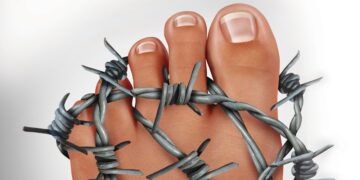Understanding Calluses and Ingrown Nails
Managing painful calluses and ingrown nails is a common challenge many face. By understanding the conditions, their causes, and symptoms, you can effectively manage them to reduce discomfort and maintain optimal foot health.
What Are Calluses?
Calluses, known scientifically as tylomas or hyperkeratosis, are hard, thickened areas of skin that form as a natural defense mechanism. They occur due to excessive friction or pressure and are commonly found on the feet. While normally protective, they can become painful if they develop on pressure points.
Symptoms of Calluses
- Thickened, hard skin
- White or yellowish coloration
- Indistinct edges
- Loss of sensation
- Dry, flaky, and cracked appearance
- Pain and discomfort at pressure points
Causes of Calluses
- Friction from rubbing and unbalanced weight distribution
- Aging-related skin changes such as loss of fat pads
- Improper footwear
- Foot deformities like bunions
- Abnormal walking patterns
- Physical disabilities
Managing Calluses
Proper management of calluses involves several key steps:
- Use soap-free soaks and cleansers to maintain skin cleanliness.
- Apply non-aggressive skin softening products to calluses.
- Avoid removing calluses entirely; aim for gentle reduction of 50-67% based on individual needs.
- Stay within your professional scope; avoid using blades and recommend proper footwear.
- Use socks and foot-specific exfoliants.
- Recommend orthotic insoles to alleviate pressure.
- Use daily moisturizing skincare products designed for foot care.
- For non-standard colored calluses, advise a visit to a medical professional.
Understanding Ingrown Nails
Besides calluses, ingrown nails are another common foot issue. They occur when the nail grows into the skin, causing pain and sometimes infection.
Symptoms of Ingrown Nails
- Pain and tenderness along the sides of the nail
- Redness and swelling
- Infection if not properly treated
Causes of Ingrown Nails
- Cutting nails too short
- Wearing tight shoes that press the nails
- Injuries to the nail
- Genetic predisposition
Preventing and Treating Ingrown Nails
To prevent and treat ingrown nails, consider the following steps:
- Trim nails straight across and avoid rounding the edges.
- Wear shoes that fit properly to prevent pressure on the nails.
- Soak feet in warm water and gently massage the area to manage inflammation.
- Seek professional treatment if infection occurs or home treatment fails.
Professional Advice and Further Reading
For more in-depth information on foot care topics, including corns, involuted nails, and pincer nails, you can refer to Nailpro’s May 2022 digital magazine. Always consider consulting with a certified foot care specialist for personalized advice.
About the Author
Debra Bourque, founder and director of education for the School of Advanced Footcare Education, specializes in foot care. With over 24 years of experience, her expertise is grounded in numerous advanced certifications. Through education, Debra ensures safe and effective foot care management practices are accessible to professionals nationwide.

























